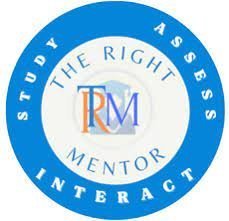Your cart is currently empty!
Course Tools
Study | Assess | intearact
Select Course (Level) & Type Of Educational Tool
LIGHT, SHADOWS AND REFLECTIONS | Study
Pre-Requisires
Test & Enrich
LIGHT | Speed Notes
Notes For Quick Recap
Light is the natural agent that stimulates sight and makes things visible.
Its path is only visible when it is scattered by dust particles present in the atmosphere. Light is a form of invisible energy.
Light itsel is not visible .
It makes other objects visible.
Light and the eyes both are necessary to see the things.
The sensation which helps us to see things is called Sight or the Vision.
Study Tools
Audio, Visual & Digital Content
SOURCES OF LIGHT
Light is classified into two:
(i) Emission of light: Classifying objects on the basis of emission of light.
LUMINOUS OBJECT: objects which emit their own light are called luminous objcts.
Ex. A candle, electric torch.
NON-LUMINOUS OBJCTS: Objects which do not have their own light and are seen by the light scattered by them are called non-luminous objects.. Example: moon, chair, table, etc.
Optical Media: Any substance which allows ligt to pass through it either partially or wholly is calle an otical media.·
Transparent: All substances that allow light to pass freely through them and through Sun, stars electric torch, candle flame.
Light, Shadows and Reflections
Revision Notes:
which objects can clearly be seen are called transparent substances.
Example: Glass, water, air, etc.
Translucent: A substance that allows light to ass through it only partially is calle a translucent medium or substance.
Example: butter paper, tissue paper, etc.
Opaque: Objects that do not allow light to pass through them.
Example: book, brick, etc.
Shadow: A shadow is the ‘region of absence of light’. Light from a source is cut off by an obstacle and shadow is formed.
Opaque object cast a dark shadow. Translucent objects produce a weak shadow.
Transparent objects do not cast a shadow at all.
Types of shadow:
The kind of shadow depends upon the size of he source of light.
Due to smaller (point) light source: Only one dark shadow is formed and this is known as Umbra.
Due to larger(extended) light source: Two shadows are formed-a dark one in the centre and a light one on the outside. Dark shadow is called umbra and the faint or lighter shadow is called penumbra.
The size of umbra decreses and penumbra increses as the the screen is moved away from the object.
Colour of shadow: Whatever be the colour of the opaque objcet , the shadow formed is always of the same colour, that is , black.
LENGTH OF THE SHADOW:- The length of the shadow differs depends upon the angle at which light falls on a body.
Eclipse: A shadow formed in space that makes the sun or the moon invisible for some time.Eclips is the overshading of a bright obect.
(ii) Reflection of light: The process of sending back the light rays whichafall on the surface of an object. Silver metal is one of the best reflector of light.
Solar eclipse: The moon comes between the sun and the earth, so that the earth (in the shadow) darkens during the day.
The solar eclips occurs only on a ‘NEW MOON DAY’.
Lunar eclipse: The moon and the sun are in a straight line such that the earth is in the between the sun and the moon, the shadow of the earth falls on moon and the moon cannot be seen.
The lunar eclips occurs on a ‘FULL MOON ‘ NIGHT.
Dig Deep
Topic Level Resources
Sub – Topics
Select A Topic
Topic:
Chapters Index
Select Another Chapter
- CBSE 6 | Mathematics – Study – Premium
- CBSE 6 | Science – Study – Premium
- CBSE 6 | Mathematics – Study – Premium
- Copy of COMPONENTS OF FOOD | Study
- COMPONENTS OF FOOD | Study
- SORTING MATERIALS INTO GROUPS | Study
- SEPARATION OF SUBSTANCES | Study
- GETTING TO KNOW PLANTS | Study
- BODY MOVEMENTS | Study
- THE LIVING ORGANISMS — CHARACTERISTICS AND HABITATS | Study
- MOTION AND MEASUREMENT OF DISTANCES | Study
- LIGHT, SHADOWS AND REFLECTIONS | Study
- ELECTRICITY AND CIRCUITS | Study
- FUN WITH MAGNETS | Study
- AIR AROUND US | Study
Assessments
Personalised Assessments
Dig Deep
Deep Learning And Testing
Here you can switch between educational tools ( Study & Assess) By Filtering Or Search for Title.



Leave a Reply
You must be logged in to post a comment.